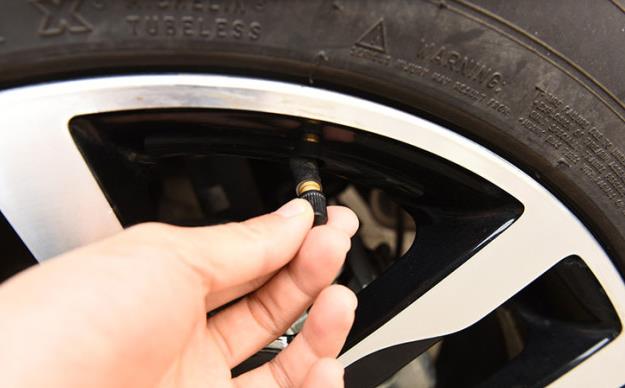How Much Routine Car Maintenance Costs
Regular car maintenance keeps your engine running smoothly and many serious car problems at bay. It’s also relatively inexpensive — basic services can start at less than $100 per year — and lowers your total car costs because you’ll avoid some more expensive repairs down the road.
The routine maintenance your car will need — and its cost — depends on the vehicle itself. But there are some services that almost all cars require periodically
Basic car maintenance costs
The vehicle maintenance schedule in your car's owners manual will tell you what services it needs and when. The older your car is, the more work it will need.
Modern cars need less maintenance than ever, thanks to increased computerization and mechanical improvements in engine design. However, nearly every car regularly requires the following basic services:
*Costs and timing based on estimates from automotive websites and experts.
Oil changes
The standard advice used to be to change your oil every three months or 3,000 miles. Most cars today can go much farther — often between 5,000 and 7,500 miles, and sometimes up to 10,000 miles — before needing an oil change. Check your car’s owners manual for the manufacturer's recommendation. Some newer vehicles have oil monitoring systems that alert you when it’s time to change your oil.
Tire rotations
Because the front of the car often bears more of the weight, rotating your tires prevents uneven wear and prolongs their life. Most auto experts agree a good rule of thumb is to rotate your tires with every oil change, but your manual will have the carmaker's recommendation.
Multipoint inspections
These vary both in scope and price, depending on your mechanic; some offer them for free. AAA advises checking the following when you get an oil change: fluid levels, hoses, air filters, belts, battery, and tire tread depth and inflation pressure. Most people prefer having a professional inspect these things, but you can check some yourself.
Replacing worn-out parts
Many car parts today “are meant to last and last and last, and they typically don't fail unless you've ignored something downstream,” says Kristin Brocoff, director of communications for CarMD.com, a site that diagnoses car issues.
Even so, certain parts wear down from regular driving and will likely need to be replaced while you own the car. Some additional services your car might require include:
*Costs and timing based on estimates from automotive websites and experts.
Tires
The Rubber Manufacturers Association states that it has seen no “scientific or technical data” on the life span of tires, and your owners manual usually won’t say exactly when to replace your tires, either. But check them once a month for cracks that indicate the rubber has dried out. You can also use the penny test to check tread depth.
Wiper blades
The Rubber Manufacturers Association states that it has seen no “scientific or technical data” on the life span of tires, and your owners manual usually won’t say exactly when to replace your tires, either. But check them once a month for cracks that indicate the rubber has dried out. You can also use the penny test to check tread depth.
Engine air filter
This stops dirt and debris from getting into your engine, while allowing clean air to flow in. A replacement is recommended at 20,000 to 60,000 miles, depending on your make and model, says Brandon Anderson, an ASE-certified technician and automotive parts and service advisor for CarDash, a car repair service concierge. The engine filter is sometimes confused with the cabin air filter, which filters the air from the heating, ventilation and air-conditioning system. The cabin filter won’t affect your engine, but it might improve your comfort to change it every 12,000 to 15,000 miles.
Brake pads
Brake wear varies depending on your driving style and the terrain, but the pads likely will need replacing after 50,000 miles — or even closer to 30,000 miles, says Dan Edmunds, director of vehicle testing for automotive site Edmunds.com.
Get to know your car’s needs
To find out exactly what maintenance your car needs, turn to the maintenance schedule in your owners manual. For example, a 2010 Toyota Corolla needs the following services at 30,000 miles or 36 months:
Replace engine oil and oil filter
Rotate tires
Check installation of driver’s floor mat
Inspect and adjust all fluid levels
Replace cabin air filter
Replace engine air filter
Your car’s maintenance needs also depend on how you drive it. You’ll need more maintenance if you frequently idle, tow heavy loads or drive in very cold or hot weather. However, the vast majority of drivers can follow the normal factory schedule, says Dan Edmunds, director of vehicle testing for car site Edmunds.com.
Knowing your car’s service schedule is also key to handling extra sale pitches from your mechanic, such as an automatic transmission flush.
If the mechanic suggests work outside of regular maintenance, you can say, “I just want to stick to my schedule for now” — that is, unless you suspect your car needs a repair, maybe because of a rattling sound or a check engine light.
Once a car exceeds 100,000 miles, it will require more maintenance, and the costs will climb. However, Brocoff says, vehicles now last so long, they're outlasting some of their parts.
























